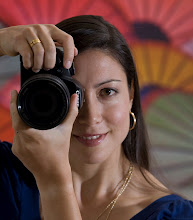Built on a network of canals lined with beautiful, historic (and often precariously leaning) buildings, Amsterdam is a fabulous place to explore on foot, bike or boat. On sunny afternoons, people gather at quaint waterside cafes, or relax on the elaborate decks of the city's many houseboats. In rainy weather, a host of first class museums and galleries easily provide hours of diversion.
While Amsterdam wears all types of weather well, it looks its most charming at night, when the city's bridges, strung with lights, cast a warm glow over the canals and tree-lined walkways.
 Dam Square stands at the center of the city. On the left is Koninklijk Paleis (the Royal Palace), originally built in the 17th century as the city hall; beside it is the Nieuwe Kerk (New Church), first built in the 15th century.
Dam Square stands at the center of the city. On the left is Koninklijk Paleis (the Royal Palace), originally built in the 17th century as the city hall; beside it is the Nieuwe Kerk (New Church), first built in the 15th century. The Begijnhof, which dates back to at least the 14th century, was built as a religious community for unmarried women; today, it's a peaceful haven within the bustling city
The Begijnhof, which dates back to at least the 14th century, was built as a religious community for unmarried women; today, it's a peaceful haven within the bustling city This bookcase masked the secret entrance to the annex where Anne Frank and her family lived in hiding during the Nazi occupation of Amsterdam. Anne Frank's diary, published by her father in 1947 after her death in a concentration camp, chronicles two years of her time in the annex.
This bookcase masked the secret entrance to the annex where Anne Frank and her family lived in hiding during the Nazi occupation of Amsterdam. Anne Frank's diary, published by her father in 1947 after her death in a concentration camp, chronicles two years of her time in the annex. The unusual interior of the 13th century Oede Kerk (Old Church); because so few of the city's residents practice Christianity, Amsterdam's major churches have been converted into exhibition or event halls
The unusual interior of the 13th century Oede Kerk (Old Church); because so few of the city's residents practice Christianity, Amsterdam's major churches have been converted into exhibition or event halls






No comments:
Post a Comment